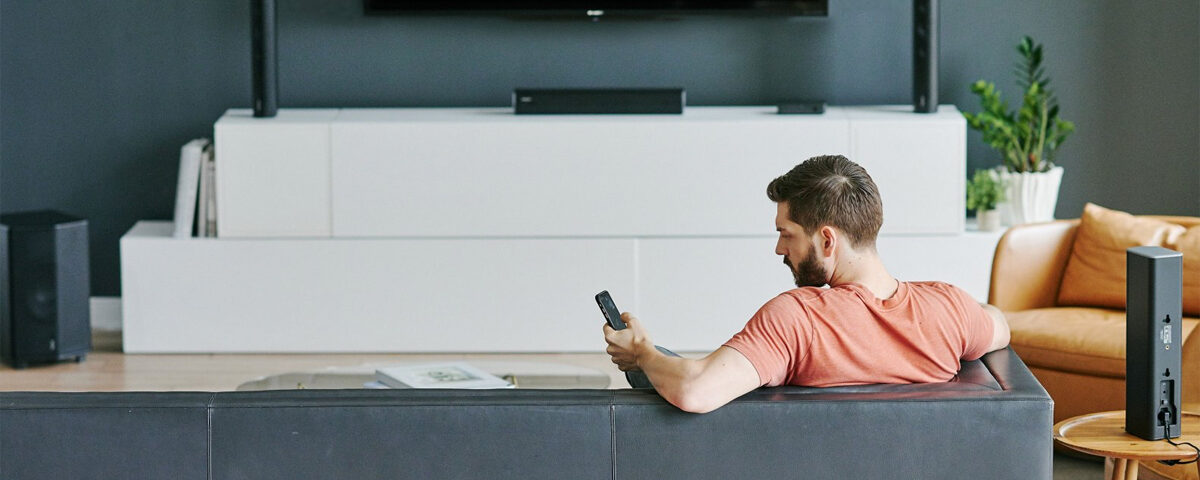Invisible Sound: The Future of Home Audio Systems
In the world of technology and design, innovation is key. While modern speakers have come a long way in terms of aesthetics and quality, there’s a growing interest in a concept that blends seamlessly into the background: invisible sound. As the name suggests, invisible speakers are designed to be concealed within walls or ceilings, offering excellent sound quality without compromising on interior design. With the constant evolution of home entertainment systems, it’s no wonder that invisible sound is expected to gain popularity in the near future. In this article, we’ll delve into the world of invisible sound, discussing its benefits, installation process, and potential applications.
The Concept of Invisible Sound
Invisible sound technology involves the use of hidden speakers that are embedded into walls or ceilings, essentially making them invisible to the naked eye. These speakers can either be completely concealed behind the surface material or covered by a thin layer of paint or wallpaper. The goal is to create a high-quality sound system that doesn’t detract from the aesthetics of a space, allowing for a more immersive listening experience.
Benefits of Invisible Sound
- Enhanced Aesthetics: One of the most significant advantages of invisible sound is the ability to maintain a clean and uncluttered look in a room. With no visible speakers, the interior design remains intact, and homeowners can enjoy a minimalist or modern aesthetic without the distraction of bulky audio equipment.
- Space-Saving: Invisible speakers are an excellent solution for smaller spaces or rooms where floor space is limited. They eliminate the need for traditional floor-standing or shelf speakers, providing more room for furniture and other design elements.
- Customizable Sound Experience: Since invisible speakers can be installed in various locations throughout a space, homeowners can tailor the audio experience to their specific needs and preferences. This flexibility allows for a more immersive and enjoyable listening environment.
- Increased Property Value: The incorporation of high-quality, hidden audio systems can potentially increase the value of a property, as it demonstrates attention to detail and a commitment to modern design principles.
The Installation Process
While installing invisible sound may require some work, the result is often worth the effort. Professional installation is recommended, as it typically involves cutting into walls or ceilings, running wiring, and ensuring that the speakers are properly secured and sealed. A skilled contractor or audio installation expert can help ensure that the process goes smoothly and that the final result meets your expectations.
Some important considerations for installation include:
- Speaker Placement: It’s essential to plan out the ideal locations for the speakers to achieve the best sound quality and coverage. This may involve experimenting with different configurations to find the optimal setup for your space.
- Sound Insulation: Proper insulation is necessary to minimize sound leakage to other rooms and to protect the speakers from damage due to moisture or temperature fluctuations.
- Surface Material: The type of surface material used to cover the speakers will impact the final sound quality. It’s crucial to select a material that allows for optimal sound transmission while still remaining visually appealing.
Future Applications and Developments
As the popularity of invisible sound continues to grow, we can expect further developments and innovations in this field. For instance, there’s potential for the integration of smart home technology, allowing homeowners to control their invisible sound systems through voice commands or smartphone apps. Additionally, invisible sound could extend beyond residential applications, finding use in commercial spaces such as hotels, restaurants, and offices where maintaining a specific aesthetic is crucial.
Conclusion
Invisible sound is a fascinating concept that combines cutting-edge technology with a focus on design and aesthetics. As more and more homeowners seek to create immersive and visually appealing spaces, the demand for invisible speakers is likely to increase. With continued advancements in this field, the future of home audio systems appears to be on the path of seamless integration and unobtrusive design. As the market for invisible sound expands, we can anticipate the emergence of new products and solutions that will cater to the diverse needs and preferences of consumers, further solidifying the place of invisible sound in modern home design.
Moreover, the adoption of invisible sound systems may also pave the way for advancements in the field of sound engineering and material science. Researchers and manufacturers will be encouraged to develop new materials and technologies that can further enhance the performance of invisible speakers, ensuring optimal sound quality and an even more seamless integration into various environments.
In conclusion, invisible sound is set to revolutionize the way we experience audio in our homes and other spaces. Its ability to provide excellent sound quality without compromising on aesthetics makes it an attractive option for those looking to create a modern and stylish environment. With its growing popularity and the continuous development of new technologies, invisible sound is poised to become an integral component of contemporary interior design and home audio systems.

